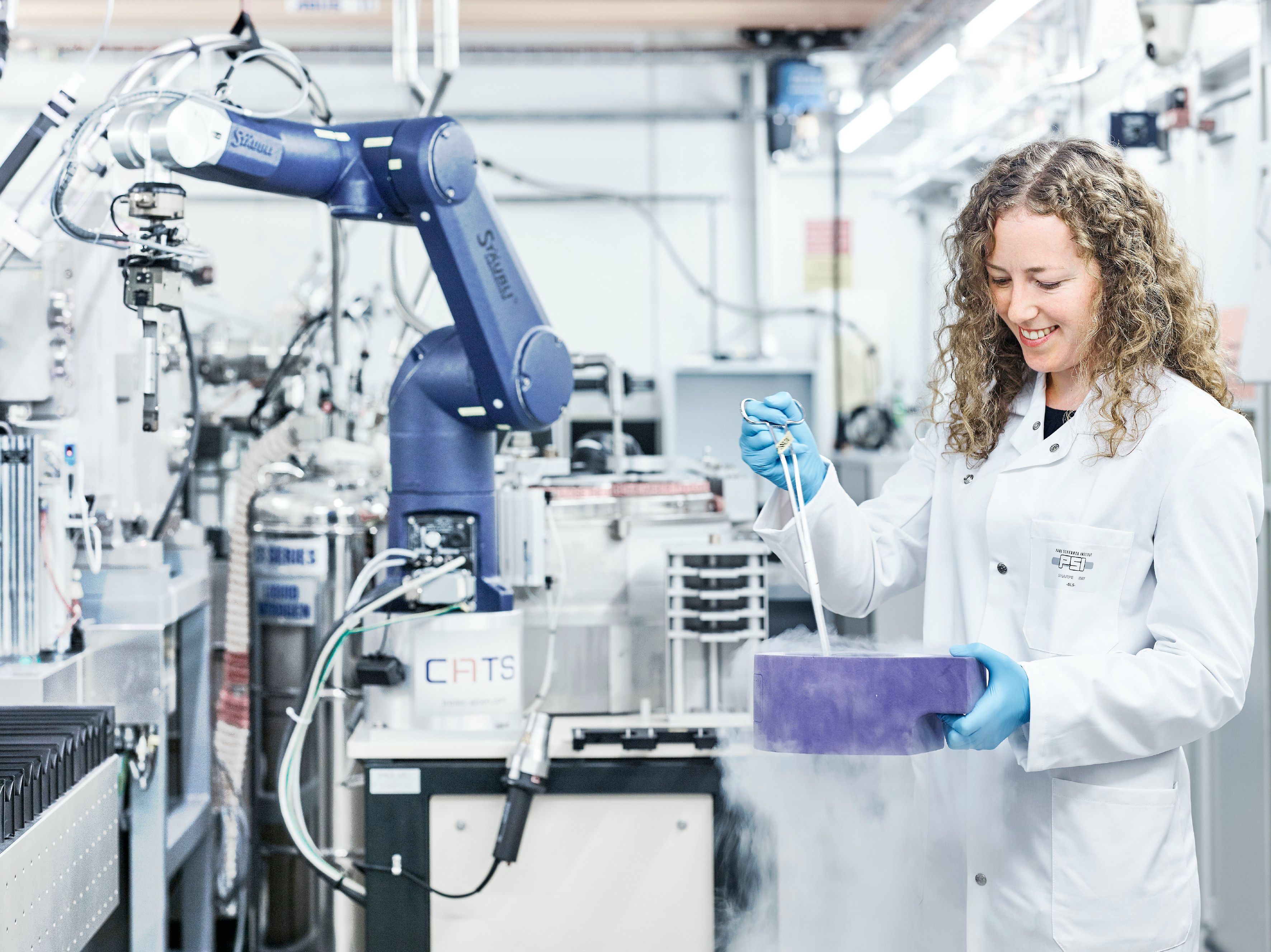Healthy Ageing
Supporting vital coronavirus research

Rapid access for vital Covid-19 research projects has been the top priority for the Swiss Light Source during 2020.
The Swiss Light Source is one of just a few facilities of its kind across Europe that has kept operating despite the shutdown of everyday life around the globe as a consequence of the Covid-19 pandemic. Research results have been submitted for publication in record time - within one month of submitting an experiment proposal, in some cases.
Whilst most employees at the Paul Scherrer Institute (PSI) have been working from home, a core team has kept the essential research facilities and projects operating in accordance with all the necessary safety precautions.
“We are extremely proud that we have been able to keep the Swiss Light Source running throughout the pandemic,” says Gabriel Aeppli, head of the Photon Science Division at PSI. “This research is very urgent, and every single day that we gain in the battle against this virus will be worth it. In early 2020, we decided that if we at PSI can contribute to finding a drug or a vaccine more quickly, then we absolutely have to do it.”
Priority rapid access for Covid-19 research extended until December 31, 2020
During the whole Covid-19 crisis, the SLS has been in 24/5 user operation with local safety measures against Covid-19 infections in place. In June, operation was ramped-up to full 24/7 working.
Immediately at the start of the crisis, priority rapid access for Covid-19 research was established with a "Priority Covid-19 Call” and this remains active throughout the remainder of 2020.
In one example of the speed obtained in the rapid-access call, scientists from the Goethe University Frankfurt, Germany, were able to publish results within one month from the submission of the experiment proposal.
The structural-biology work on the papain-like protease (PLpro), an essential enzyme of SARS-CoV-2, was performed at the macromolecular crystallography beamline X06SA-PXI. The crystallographic data collection happened on the 9th of April 2020, the paper was submitted within one month after answering the proposal call, and published on the 29th of July (Nature, 29. July 2020 (online) DOI: 10.1038/s41586-020-2601-5).
Supporting SMEs with vital research through remote access
Small and medium-sized enterprises (SMEs) regularly use the Swiss Light Source for their research. These are mainly pharmaceutical companies that develop active ingredients for vitally important medical research.
To continue supporting these customers, at the start of the pandemic, protein structure analysis experiments were converted to 100% remote control, which works in a similar way to video conferencing.
Research teams report that this works extremely well, either using full remote access, or mixed local-remote teams for more complex experiments.
How can synchrotron light help coronavirus research?
The Swiss Light Source makes extremely bright x-ray light that is particularly well suited to the investigation of microorganisms such as viruses and their components.
SARS-CoV-2 coronavirus molecules are spherical and around 100 nanometres in size. Its protein molecule building blocks are correspondingly smaller.
Structural analysis with x-rays plays an important role in understanding how this virus works, how it docks onto the cells of the body, and how the virus multiplies.
For developing drugs and vaccines that can fight the virus, knowing the exact form of a virus protein informs the search for the right active ingredients or the route to assemble them chemically. This procedure is called structure-based drug design.
At the Swiss Light Source, three experimental stations have specialised in the study of proteins for many years. With access to a kind of ‘library’ that contains fragments of drug molecules, researchers can try them out to see which of them can bind to parts of a virus. This is a starting point for developing drugs to combat the virus.
